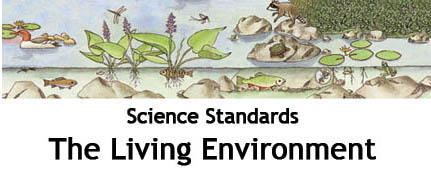

Students will understand and apply scientific concepts, principles, and theories pertaining to the physical setting and living environment and recognize the historical development of ideas in science.
Plants and animals depend on each other and their physical environment.
“Plants and animals interact in a number of ways that affect their survival. The survival of plants and animals varies, in response to their particular environment. As the physical environment changes over time, plants and animals change. Younger students should focus on simple, observable associations of organisms with their environments. Their studies of interactions among organisms within an environment should start with relationships they can directly observe.” From the Elementary Science Core Curriculum Guidelines
Describe the relationship of the Sun as an energy source for living and nonliving cycles.
6.2a Plants manufacture food by utilizing air, water, and energy from the Sun.

